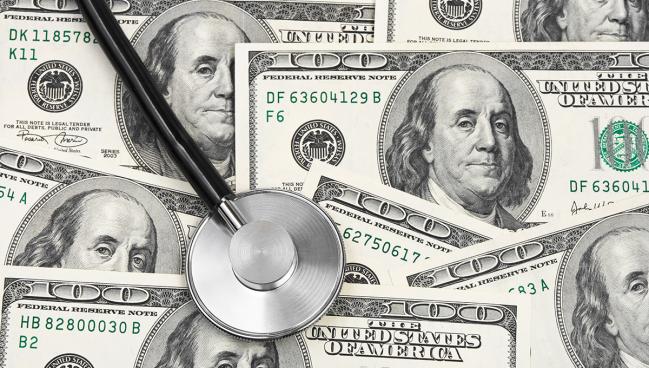Transparency Hasn’t Made a Big Dent in Payments to US Cardiologists
The Sunshine Act may be shining a light where once there was shadow, but illumination has brought little in the way of change.

The transparency created by the 2010 Sunshine Act hasn’t had much of an impact on cardiologists’ financial ties to industry, a new study shows.
Although the dollar value of payments declined between 2014 and 2019, from around $210 million to $164 million, a similar number of individual cardiologists continued to have financial relationships with industry—with a tiny slice still receiving more than $1 million annually.
As of 2013, manufacturers of drugs, devices, and biologics have been required to report any payments made to physicians and teaching hospitals by logging them in the Open Payments database.
By making these details public, the creators of the Sunshine Act’s Open Payments program hoped to diminish the potential for biased decision-making and perhaps make physicians, sensitive to the optics, less likely to accept money from drug and device makers. Notably, earlier data showed that cardiologists in particular are more likely to receive payments than physicians in other specialties.
“The point of all this is to ensure there’s no bias or overutilization of certain products when we take care of our patients. That’s the main concern,” said Vinay Kini, MD (Weill Cornell Medicine, New York, NY), senior author of the new study.
“We were thinking there [would be] a larger decrease in the amount of payments going to cardiologists, because [some saw that as] the point of the Open Payments program,” he told TCTMD, but instead the decrease in total value of payments was “very small.”
What their study—which considered things like consulting and speaker fees, but not research funding—suggests is that “increased transparency alone probably isn’t enough” to affect physician behavior, said Kini. Patients may not even be aware that the Open Payments information is available for them to see, he added.
Led by Ruina Zhang, MD, and Subhanik Purkayastha, BS (both from Weill Cornell Medicine), the study was published online recently in Circulation: Cardiovascular Quality and Outcomes.
Six Years of Open Payments
The investigators searched the Open Payments database by cardiologists’ full names and zip codes for industry payments—excluding those related to research—between 2014 and 2019.
Over that 6-year period, US cardiologists received 5.5 million payments that added up to a total of $1.1 billion. The total value of payments made to cardiologists declined by 4.9% annually during those years, while the amount paid per cardiologist dropped by 5.2% annually (P < 0.001 and P= 0.002, respectively). But neither the number of payments nor the number of cardiologists who received them decreased over time.
It’s highly skewed. A very small amount of cardiologists received large payments. Vinay Kini
Speaker fees made up the bulk of total payments, at $444.5 million (40.8%), followed by consulting fees ($207.7 million; 19.0%) and food/beverage ($143.2 million; 13.1%).
While consulting and food/beverage payments held steady, the speaker fees dropped by 12.6% over the years. “Reduction of payments in this highly visible category may be attributed to an environment of increased transparency and associated heightened public and peer scrutiny,” Zhang et al suggest.
Three-quarters of cardiologists in the data set—28,896 individuals—received less than $10,000 per year, representing 5.6% of total payments. By comparison, 110 cardiologists (0.3%) received more than $1 million annually. “It’s highly skewed. A very small amount of cardiologists received large payments that [accounted for] 25% of total payments,” whereas most received smaller things like lunches, said Kini.
The researchers caution that the study didn’t assess which factors might be driving these patterns, such as the physicians’ age or practice settings, and, on the whole, wasn’t able to explore causal relationships.
How exactly to discourage the types of payments that might lead to bias is “a tough question,” said Kini. “Advances are definitely made with industry collaborations, and there’s a way to do that in an appropriate way,” such that these benefits aren’t lost.
Caitlin E. Cox is News Editor of TCTMD and Associate Director, Editorial Content at the Cardiovascular Research Foundation. She produces the…
Read Full BioSources
Zhang R, Purkayastha S, Ying X, et al. Trends in industry payments to cardiologists from 2014 to 2019. Circ Cardiovasc Qual Outcomes. 2023;16:e009820.
Disclosures
- Kini reports grants from the National Institutes of Health outside of the submitted work.
- Zhang and Purkayastha report no relevant conflicts of interest.



Comments